
This is my most unusual plant. It is a lowland, swamp loving Nepenthes that was a carnivore and has switched to a detritivore diet. Though they don’t mind an occasional bug. The pitchers have enzymes and bacteria to break down and digest leaves, insects and insect larvea. The pitcher fluid is more basic than is found in other Nepenthes. Many insects will make homes for themselves in the pitchers.
I started with a batch of seeds I purchased on eBay. The first couple years growth is very slow, they make up for it the third year.
They are native to the rainforests of Malaysia and Indonesia. You’ll often see them at food stands, the pitchers stuffed with rice. I’ve also seen them called ‘monkey cups’.
In Malaysia a tea made from the roots is used to treat dysentery.
Keep them warm 60’F-80’F humid, wet and out of direct sunlight. I’ve done best growing them in orchid baskets full of sphagnum moss. I seat the baskets in a clear pot and keep an inch or so of water in there. Only use distilled water, they are sensitive to chemicals in drinking water.
I found started Nepenthes seeds in terrariums on top of peat moss works best.
Nepenthes ampullaria are most strongly related to Bicalcarata. Ampullarias are most easily identified by the tiny, narrow lid on the pitcher. There is a large variation in pitcher size, colors are solid green or green speckled with red.
Some leaves do not have pitchers, but instead grow tendrils.

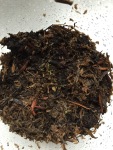
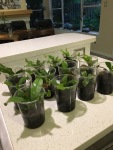


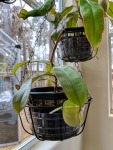
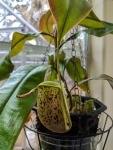
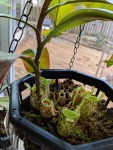
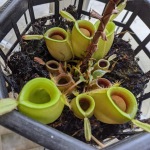
You must be logged in to post a comment.